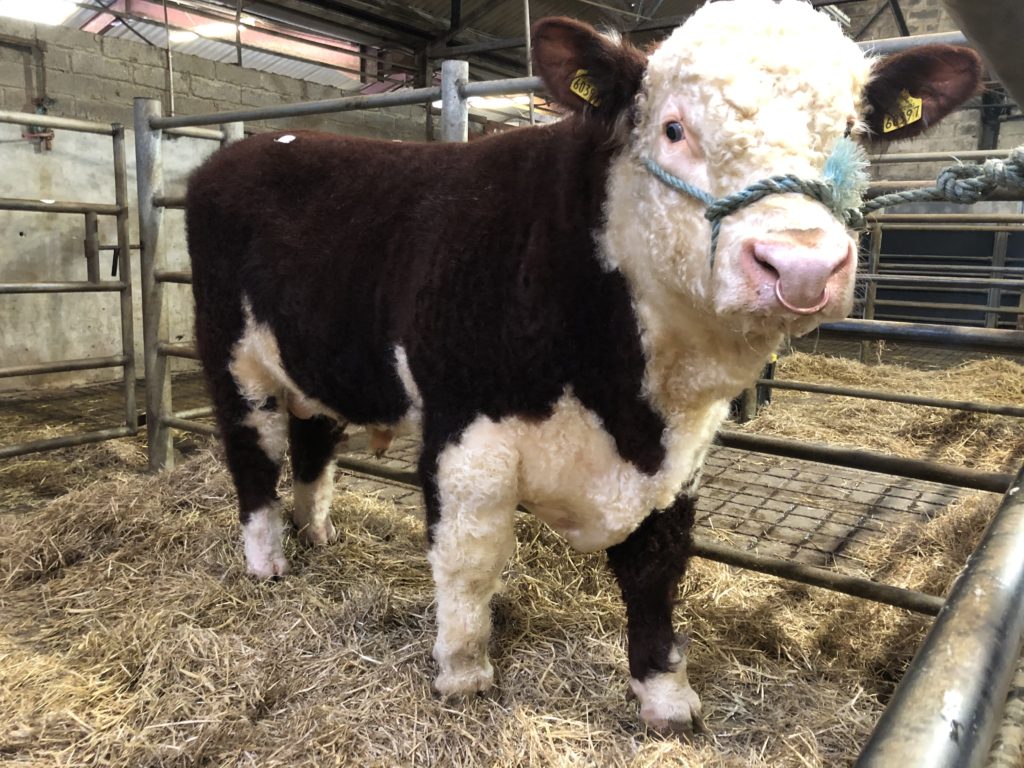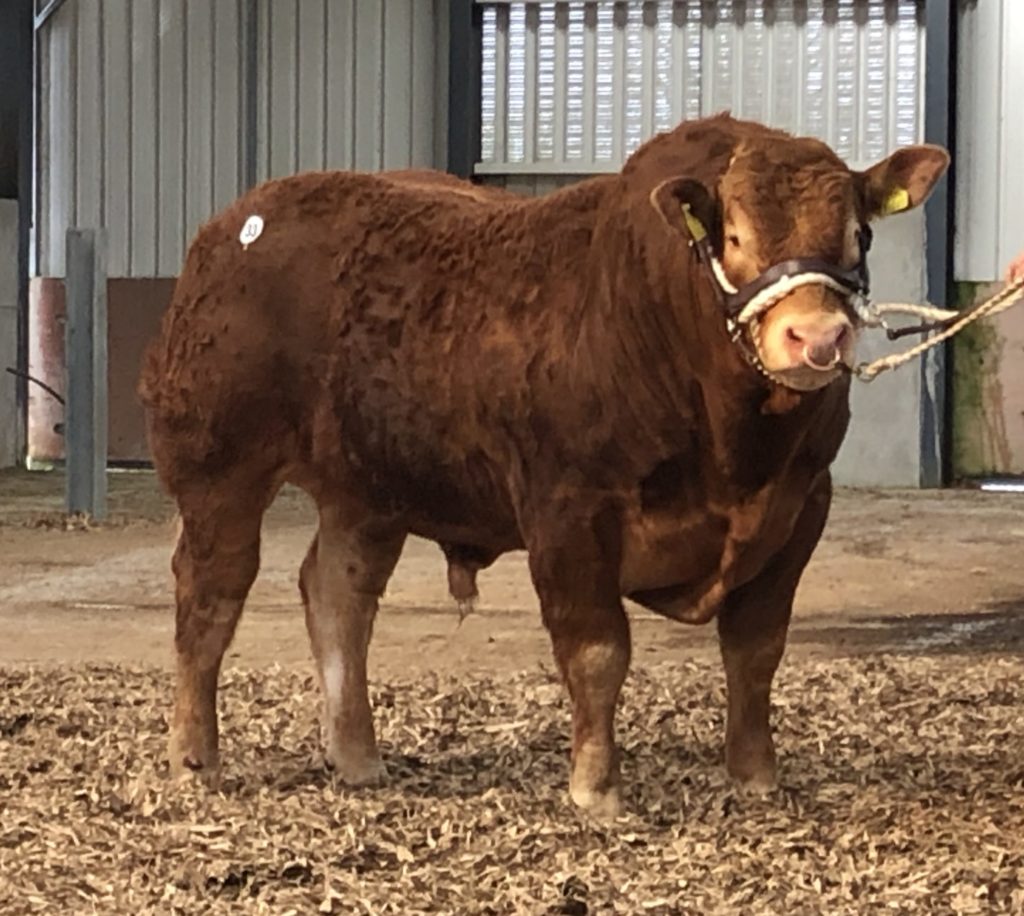Buying a new stock bull can be both an enjoyable and stressful experience for suckler farmers.
In one way, new genetics will be entering the herd, but farmers always need to be cautious in ensuring that they make the right purchase – especially when spending big money.
There are two methods of buying a bull; at the mart, or directly off-farm. Due to Covid-19 guidelines, buying a bull through a mart has changed slightly.
For farmers that are planning to buy a pedigree bull through breed society sales, the guidelines currently in place at some marts stipulate that exhibitors cannot stay with their bulls during pre-sale viewing times.
Therefore, it can be useful to look at the sale catalogue before the sale day. Then, try to get the contact number of the exhibitor that is selling an animal that you are interested – either before or after the viewings – so that you can ask the necessary questions about the bull.
If buying a bull directly off-farm, remember that the buyer and seller need to abide by and be respectful of social distancing and Covid-19 preventative measures.
What to look for when buying a stock bull?

Different farmers are going to have different criteria that they look for when buying a new stock bull for the herd. Here are just a few tips to consider that will aid your purchasing.
Terminal or Maternal:
A farmer needs to identify whether they are looking for a terminal or maternal sire. If the farm is not retaining heifers as replacements, or selling heifers on for breeding, then the terminal side will be the main focus.
If you are aiming to breed replacement females then you will be targeting a balance of maternal traits.
Know the farm’s requirements:
Farmers should think about the type of progeny that they want to produce before they make their purchase.
Do you want to produce beef weanlings suitable for the export market, breed heifers for replacements, or produce cattle suitable for finishing between 24-30 months old?
If it is going to be a case where a farmer may not be around at all times during the calving season – they need consider purchasing a sire that has a low trait percentage for ease of calving.

Physically look at the bull:
One of the first things that buyers need to do is physically look at the bull that they are buying in order to ensure that they meet your farm’s criteria.
On a number of occasions pedigree breeders have been in a situation where farmers are simply contacting them and buying stock bulls off pedigree and figures alone.
Different breeds will have different qualities to look for, but some simple things to look at include bull’s hooves and legs – along with the functionality of how they walk. Keep an eye out for any lameness or stiffness.
From their conformation, one of the most sought-after points is having a long, clean body. Look at their body condition and decide if they will be fit for working when you need them. Ask the breeder about the diet the bull has been on.

Examine the scrotum size for any deformities and ideally be purchasing a bull that has been fertility tested. However, even if a bull has been tested, they still should be monitored mounting the cow and watched for any repeated heats.
Keep an eye on the docility of the bull and how they behave in your presence. Again, always keep in mind that even the most docile of bulls should never be underestimated, as they can still potentially turn on their owners.
Euro-star figures:
Farmers have the option of viewing a bull’s euro-star evaluation figures before they make their purchase.
Remember that these figures should only be used as a guide, and that the physical make-up of the bull still needs to be examined to ensure that the quality matches the paper.

Any pedigree bull’s figures can be viewed by entering their tag number into a search bar on the Irish Cattle Breeding Federation’s (ICBF) website.
Farmers are able to compare a bull’s traits with the breed average across all breeds to see how their figures match-up.
If you want to improve maternal aspects of the progeny, then you are going to be looking at traits such as daughter milk and fertility.
If aiming to improve terminal traits, you will be keeping an eye on traits such as carcass weight and carcass conformation.
For traits such as calving ease, these have now been split into matings with beef heifers and beef cows – again comparisons can be made to the breed average figures.

The reliability of these figures also need to be examined as the lower reliability of the trait, the more threat the figure can dramatically change. Aim to purchase a bull that has been genotyped as this will increase the trait reliability.
The pedigree herd may be part of the Whole Herd Recording Program (WHPR), which will provide you with more data to examine, and means that a bull’s figures will potentially have a higher reliability.
There is also a stock bull finder application on the ICBF’s website that may assist your purchasing.
Also ask a breeder if they have been weight recording the bull, as this will give you an indication of their performance from birth to the present day.
Pedigree:
Always ask about the pedigree when buying a stock bull. Some farmers will have preference about bloodlines, so try to view the full pedigree of the bull you are purchasing.
If the bull is sired by an AI sire you can do some research as to how his sire’s progeny traditionally perform.
If the animal is sired by a stock bull, then ask the breeder about his performance and try to see siblings of the animal that you are trying to buy.

Don’t forget to ask questions about the mother of the bull – remember that the dam makes up 50% of a bull’s genetic profile.
If buying the bull off-farm and the dam is still present, try to view her. If she is suckling a calf, this will give you an indication of her milking ability.
Other key points
Another point that should be considered is herd health – is the herd currently disease free. Ask if there are any vaccination protocols on the farm and if the bull has received any vaccinations.
When bringing a new bull home onto the farm, try to avoid mixing him with the herd of cows for the first few weeks just to cover a quarantine period.
Do not have the bull on his own within the shed, so if you have any cull cows on the farm, it may be suitable to pen one or two of these with the bull. Although if these cows are coming into heat, be careful that the bull does not hurt himself when rising in the pen.
In the first year of serving cows, only have a young bull mating a maximum of 20-25 cows. After buying the bull, you should gradually reduce any levels of concentrates that he was being fed – especially if they were being fed on a high plain of nutrition.
